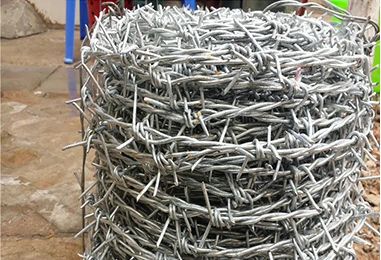 TEL:
+86-13102802206
TEL:
+86-13102802206
 Email:
fencenetting@china.com
Email:
fencenetting@china.com
 Language
Language
 TEL:
+86-13102802206
TEL:
+86-13102802206
 Email:
fencenetting@china.com
Email:
fencenetting@china.com
 Language
Language


The Versatility and Impact of Hexagonal Gabion Mesh
Hexagonal gabion mesh has become a cornerstone in modern construction and environmental engineering. These wire mesh containers, often filled with rocks, stones, or other materials, serve numerous purposes, ranging from erosion control to architectural embellishment. Their unique hexagonal design offers structural integrity and flexibility, making them an excellent choice for various applications.
Design and Structure
The primary feature of hexagonal gabion mesh is its geometric shape. Unlike traditional square or rectangular mesh patterns, the hexagonal design provides enhanced stability and strength. When filled, the interconnected hexagons form a strong barrier that can withstand significant pressures from soil or water, making them particularly effective in preventing erosion along riverbanks, slopes, and other vulnerable areas. This shape also allows for better drainage compared to more solid structures, reducing hydrostatic pressure and the risk of failure.
Applications in Erosion Control
One of the most significant applications of hexagonal gabion mesh is in erosion control. As soil and vegetation are washed away by rain or river currents, the use of gabion baskets filled with rocks can stabilize the soil, preventing further erosive damage. They are often used along riverbanks, coastal areas, and construction sites where erosion poses a risk to infrastructure and natural resources. By creating a physical barrier, hexagonal gabions protect against the loss of valuable land and minimize the impact of flooding, ensuring both environmental conservation and human safety.
Aesthetic Enhancements

Beyond their practical uses, hexagonal gabion mesh also plays a vital role in landscape architecture. These structures can be filled with various materials, including colored stones or recycled objects, allowing for a customizable aesthetic that enhances the surrounding environment. Gabions have gained popularity in urban design and park development, where they are often used as decorative elements in fences, seating, and walls. This versatility not only adds visual interest but also promotes sustainability by utilizing natural and reclaimed materials.
Environmental Benefits
Hexagonal gabion mesh systems also contribute positively to environmental sustainability. They foster plant growth by providing a substrate for vegetation to establish roots, thus further stabilizing the soil. Additionally, they allow for aquatic life to thrive in water bodies since gabion structures can create habitats and reduce the speed of flowing water, promoting a balanced ecosystem. The natural materials used in gabions are less likely to disrupt the local flora and fauna, making them an eco-friendly option compared to concrete or plastic alternatives.
Cost-Effectiveness and Durability
From an economic standpoint, hexagonal gabion mesh offers a cost-effective solution for various engineering challenges. The materials required for creating gabion structures are often locally sourced, which can significantly reduce transportation costs. Furthermore, the durability of galvanized steel wire used in their construction ensures that they can withstand environmental elements, requiring minimal maintenance. As a result, once installed, hexagonal gabions can serve their purpose for many years, providing long-term benefits while minimizing financial burden.
Conclusion
In conclusion, hexagonal gabion mesh represents an innovative and versatile solution in the realms of construction, environmental management, and landscape architecture. Their design offers strength and stability, while their applications in erosion control, aesthetic enhancements, and environmental conservation highlight their importance in modern engineering. As communities continue to face challenges related to erosion, flooding, and sustainable design, the adoption of hexagonal gabion mesh will likely increase, making them an integral part of the solution for a resilient and visually appealing environment. By embracing such technologies, we can create infrastructures that harmonize with natural landscapes, ensuring both safety and beauty for future generations.